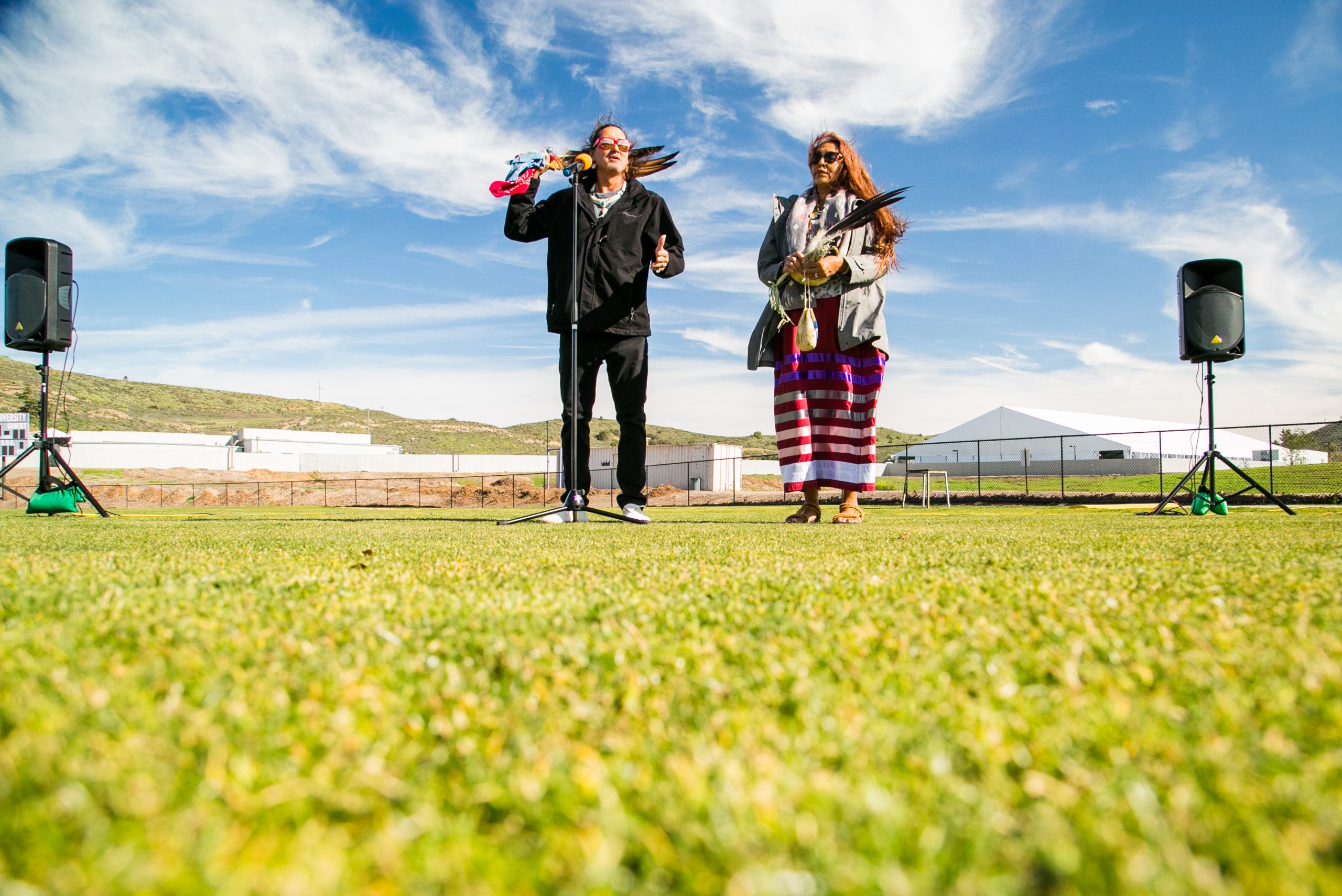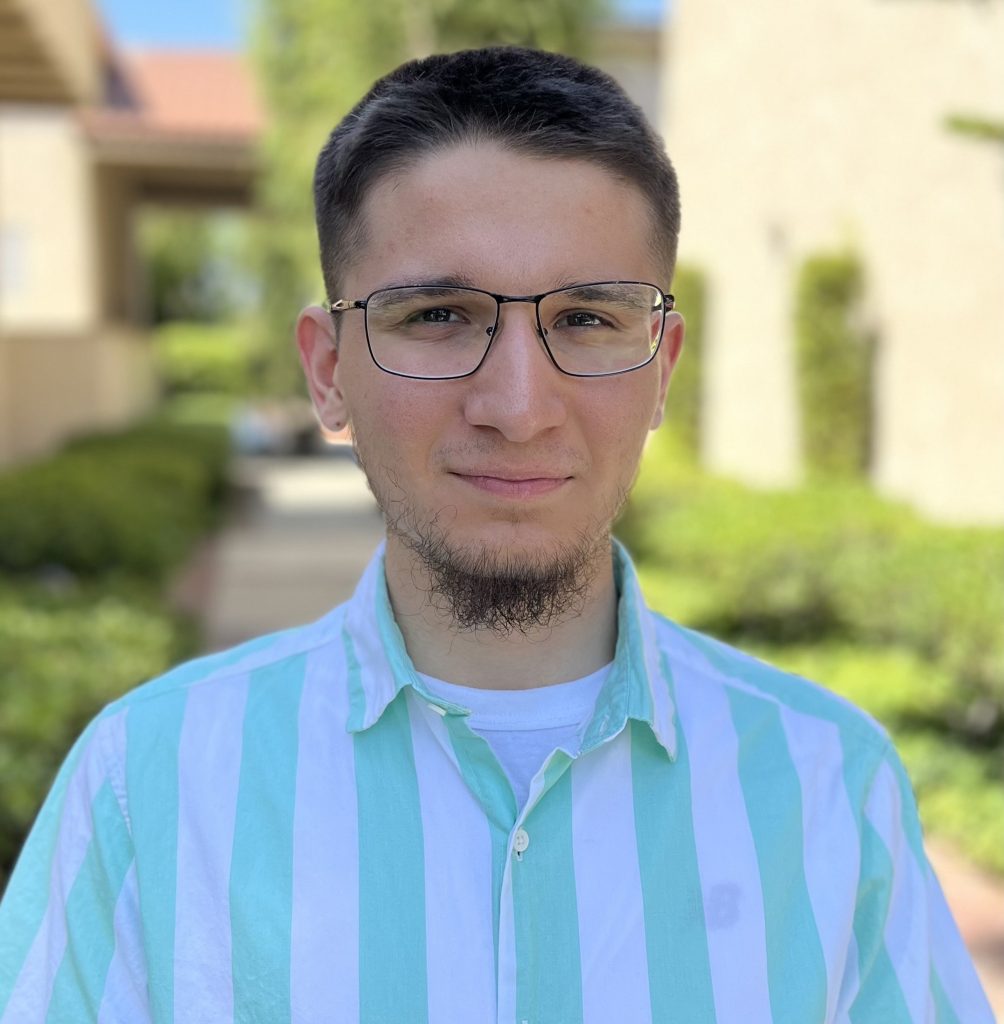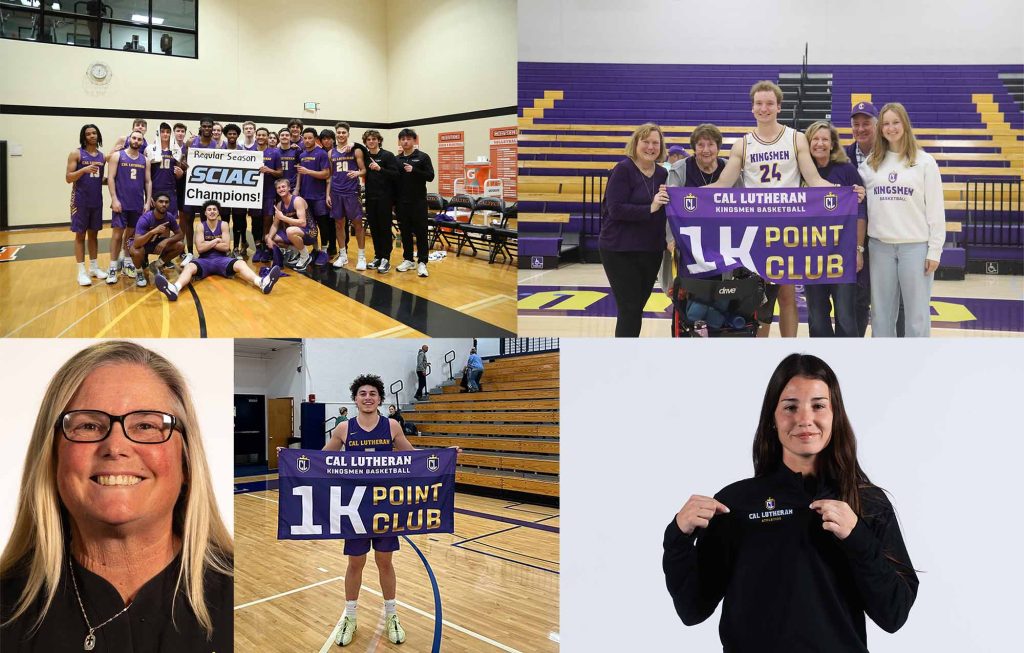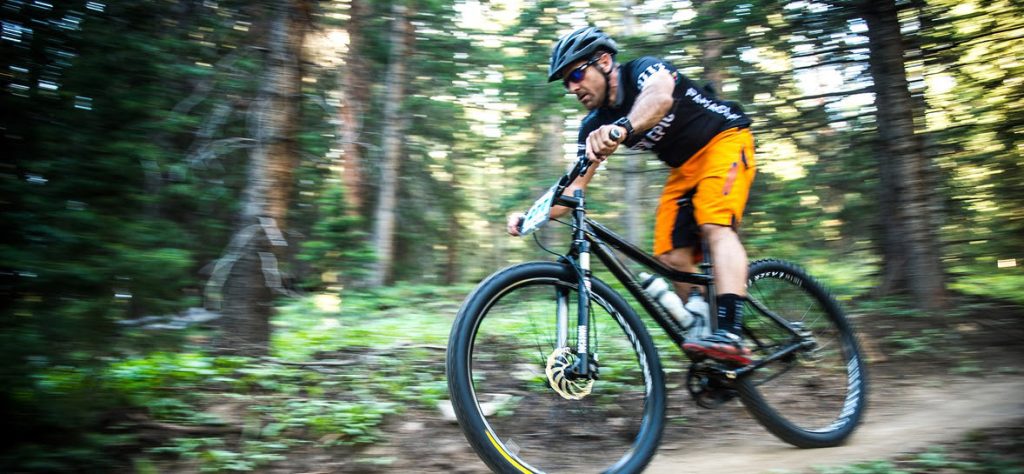In the wind air water soil sky sun moon
Stars planets animals birds memories
Laughter tears
This Indian past this Indian future
Waits
— John Trudell, Lakota activist and poet
As the wind exhaled, it shook the grounds of Cal Lutheran.
Midday in January at Kinsgmen Park, a few students pulled up their hoodies. But Kathy Willcuts and Steven Garcia, the latter wearing traditional handcrafted American Indian attire with a headdress fashioned as an eagle’s head, welcomed the wind as a living, breathing presence.
Indigenous educators Willcuts, who is Lakota, and Garcia, who is Tongva, Mescalero Apache and Yaqui, then danced, shared stories and intoned a blessing as more than 100 students, faculty, staff and community members intently listened and looked on.
They were gathered for a ceremony to commemorate a journey Cal Lutheran is taking for the first time: acknowledging the original inhabitants of the campus grounds, the Chumash, and healing the university’s relationship with the people and their land.
Cal Lutheran is known for its Scandinavian roots. But thousands of years before Richard Pederson, the son of Norwegian immigrants, donated 130 acres of land for a new Lutheran college, and before Cal Lutheran was founded in 1959, the Chumash called the land home.
The land-intention ceremony, and another the following day featuring a walk from south to north campus, were the university’s initial steps in developing a formal and Chumash-led land acknowledgment: a statement that recognizes and respects the history and presence of Indigenous peoples and their relationship to their traditional homeland.
“The intention is to heal this space, to create an opportunity for moving forward,” said Lorri Santamaría, PhD, Cal Lutheran’s new director of faculty development and inclusive excellence and Diversity, Equity, and Inclusion (DEI) Core Team member, who helped organize the ceremony.
What the land acknowledgment will look or sound like is unclear. “Yes, there will probably be a piece of paper or statement to read at an event, but that is the smallest part,” said Santamaría, a Black Louisiana Creole of Choctaw descent. The process itself, of building and honoring relationships with Indigenous peoples and their ancestors, she said, “is more important, and it takes relationship with the people involved and time.”
This first step toward land acknowledgment was put in motion by the collective efforts of the DEI Core Team, the Office of Mission and Identity, the Center for Equality and Justice, and the Pearson Library. But the university could not do this alone.
“It’s not our land; we have to develop it in concert with the Chumash people,” Santamaría said. “And first, someone working toward the acknowledgment had to be in relationship with the Chumash people.”
Santamaría didn’t have existing relationships with the Chumash, but did know Willcuts and Garcia, whom she describes as “teachers and brokers of Indigenous knowledge,” from other local events and previous collaborative work. Based on their relationship, together, they came up with the land-intention ceremonies as a first step toward land acknowledgment at Cal Lutheran.
The ceremonies, she said, have led to an invitation to promising conversations with local Chumash elders and leaders, with future talks and collaboration scheduled.
President Lori E. Varlotta, PhD, and the DEI Core Team expect to engage in such conversations with the Chumash and other local Indigenous communities to help create opportunities for the university community to learn about Indigenous history and culture. The team also will join forces with other colleagues to find and fund scholarships that bring more Indigenous students to Cal Lutheran.
At the same time, Santamaría and other academic leaders will assist faculty in making curricula more inclusive. An example of such curricular innovation is reflected in a new honors course titled “Indigenous Rights and Practices,” being taught by religion professor Colleen Windham-Hughes, MDiv, PhD, this spring. Students are exploring legal cases, political movements and theologies that have contributed to the experiences and identities of Indigenous peoples in the U.S.
Windham-Hughes invited the students in the class to attend the land-intention ceremonies.
Afterward, she said, student feedback was similar: “They all have a new memory of the park that connects them in a different way to the CLU community now, and to generations past.”
Al Nascimento, a third-year education major in the class, said “it was nice to watch the ceremony and look at how we can begin to mend the wounds we caused, taking the land in the first place.”
After the ceremony, Garcia and Willcuts spoke to students in the honors course and introduced them to new forms of learning and scholarship.
“When a student asked a question, [Garcia and Willcuts] linked it back to a story,” Nascimento said. “This is how they transfer knowledge, through stories. We’re used to reading research papers and taking hard notes; that’s not the only way to learn.”
Zach Murillo, a junior and physics major, said he wanted to take the course because he didn’t learn in elementary and high school “the truth about what really happened to Native Americans.” The land acknowledgment process focuses on the Chumash, but the class covers all Native Americans.
Windham-Hughes and her students now are figuring out what assessment will look like for the class.
Grading and “mastery” of content are not the goal. “Mastery and expertise are not within our reach,” Windham-Hughes said. “It’s a different way of learning — to learn our own ignorance and widen our understanding of what knowledge is.”
Everywhere the wind sings in a song
Don’t let illusion feed you
To the machine
— John Trudell, “Child of the Dream”
Karen Lindell has been a newspaper, magazine and website writer and editor for more than 15 years, including work at the Ventura County Star, L.A. Parent magazine, Los Angeles Times, Ojai Valley News, VC Reporter and Ranker.com. She lives in Los Angeles.


